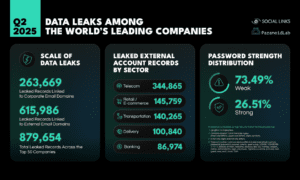The gaming world has expanded rapidly, and with this growth, so too has the sophistication of the threats it faces. FiveM, a popular modification framework for Grand Theft Auto V, allows players to create and play on customized multiplayer servers. However, like most online multiplayer platforms, FiveM is not immune to cheating. This blog delves into the importance of anti-cheat mechanisms, the types of cheats that plague FiveM, and the strategies used to craft robust anti-cheat systems that protect the integrity of the game.
Understanding FiveM and Its Popularity
What is FiveM?
FiveM is a modification for Grand Theft Auto V that enables players to create their own multiplayer servers. Unlike Rockstar’s official multiplayer mode, GTA Online, best fivem anticheat allows for complete customization, giving players the ability to modify game rules, environments, and even scripts. It has garnered a huge following, particularly among communities that enjoy role-playing (RP), car mods, or custom game modes like survival or racing.
The Rise of Custom Servers
The appeal of FiveM lies in its flexibility and creativity. Players can design custom experiences, whether that’s running an RP server with hundreds of participants or developing competitive racing scenarios. FiveM’s diverse gameplay, supported by scripting languages such as Lua, C#, and JavaScript, allows creators to innovate beyond the restrictions of vanilla GTA V. However, this flexibility comes with a downside: it also opens the door for cheats and exploits that can ruin the experience for legitimate players.
The Threat of Cheating in FiveM
Types of Cheating
Cheating has long plagued online gaming, and FiveM is no exception. The following are the most common types of cheats used in FiveM servers:
- Aimbots: These programs assist players in aiming at opponents with pinpoint accuracy, giving them an unfair advantage.
- Wallhacks: Wallhacks allow cheaters to see through walls, giving them knowledge of other players’ locations that they shouldn’t have.
- Speed Hacks: These hacks alter game speeds, allowing players to move faster than intended, disrupt game balance, and outpace legitimate players.
- Script Injection: Due to the modifiable nature of FiveM, script injection is one of the most damaging cheats. It involves the manipulation of game scripts to perform unintended actions, such as spawning money, altering game physics, or teleporting.
- God Mode: This cheat grants players invincibility, allowing them to survive otherwise fatal encounters, disrupting the balance of the game.
The Impact of Cheating on Gameplay
The presence of cheats not only ruins the experience for legitimate players but also damages the credibility of custom servers. Servers known for rampant cheating lose players and often gain a bad reputation. Over time, this can cripple the server’s player base, undermining the hard work of developers and server admins who strive to maintain a fun, competitive, and fair environment.
Role-playing servers (RP), in particular, are heavily affected by cheats. Since these servers rely on immersive experiences, even a single cheater can break immersion and disrupt the gameplay narrative, frustrating players and forcing them to leave.
Building a Robust Anti-Cheat System
The Need for Strong Anti-Cheat Measures
To maintain the integrity of their servers, FiveM administrators and developers need strong anti-cheat measures. A robust anti-cheat system not only prevents malicious activity but also instills confidence in the player base, ensuring long-term server health. However, creating such a system is no easy task.
Developers must balance security with performance. A good anti-cheat system should operate in the background without causing lag or negatively impacting gameplay. Moreover, it must evolve to adapt to new types of cheats as hackers develop more advanced methods of bypassing security.
Core Components of an Effective Anti-Cheat System
- Server-Side Validation
One of the most important elements of a strong anti-cheat system is server-side validation. Many cheats manipulate client-side data to give players unfair advantages. By validating important data such as player positions, health, and inventory on the server-side, you reduce the chances of tampering. Server-side validation ensures that the client (player’s computer) cannot report false information to the server. - Behavior Analysis
A robust anti-cheat system needs to monitor player behavior over time. By analyzing patterns such as kill-death ratios, movement speed, and unusual player actions, the system can flag suspicious activity. Players who consistently demonstrate behavior that exceeds normal human performance can be flagged for further investigation. - Signature-Based Detection
Many cheats are widely available and used across multiple servers. Anti-cheat systems can include a signature-based detection component, which uses known cheat signatures to automatically detect and prevent common cheating software. This includes known executable files, memory edits, or DLL injections that cheaters use to gain an advantage. - Heuristic Detection
Signature-based detection is effective, but it has limitations when facing new or modified cheats. Heuristic detection focuses on detecting the actions that cheats perform rather than the specific software itself. By using algorithms to analyze unusual gameplay patterns, heuristic detection can identify cheaters even if they’re using previously unknown hacks. - Anti-Tamper Mechanisms
Many sophisticated cheats operate by bypassing the anti-cheat system itself. Therefore, anti-tamper mechanisms are critical. These mechanisms make it difficult for cheaters to disable, bypass, or alter the anti-cheat software, ensuring that the system remains effective against even the most persistent hackers. - Real-Time Reporting Tools
Players themselves can be a valuable resource in identifying cheaters. Real-time reporting tools allow players to report suspicious behavior, giving server administrators the ability to investigate and take action. Having a quick and effective reporting system, combined with swift action, builds trust within the player community.
Advanced Anti-Cheat Techniques
Machine Learning and AI for Cheat Detection
Machine learning and artificial intelligence are becoming powerful tools in the fight against cheating. AI systems can analyze vast amounts of gameplay data and detect patterns that indicate cheating. For instance, if a player’s aiming accuracy is consistently higher than average, or if their movements resemble those produced by cheats, the AI can flag them for further review.
Machine learning systems can also learn from false positives, improving detection accuracy over time. By using these technologies, anti-cheat systems can adapt to new cheat types and provide proactive rather than reactive solutions to the problem.
Kernel-Level Anti-Cheat
One of the most effective forms of anti-cheat is kernel-level protection. This approach involves installing software that runs at the deepest level of a computer’s operating system, allowing it to monitor and control any interaction between the player and the game. While this method provides an exceptionally high level of security, it can be controversial. Kernel-level anti-cheat systems require deep access to players’ computers, which some may view as an invasion of privacy.
Sandbox Environment for Cheat Testing
Some developers use a sandbox environment to test the effectiveness of their anti-cheat systems. By creating controlled environments where cheats can be used without affecting actual players, developers can observe how cheats interact with the game’s code and develop countermeasures before those cheats are deployed on real servers.
Challenges in Crafting Anti-Cheat for FiveM
Keeping Up with Evolving Cheats
One of the primary challenges in developing an best fivem anticheat is the rapidly evolving nature of cheats. Hackers are continuously finding new vulnerabilities, and as they adapt, anti-cheat systems must do the same. It’s an ongoing race between cheat developers and anti-cheat engineers. Regular updates and patches are critical in staying ahead of the curve.
Balancing Security with Performance
An overly aggressive anti-cheat system can lead to false positives, where legitimate players are wrongfully banned or penalized. On the other hand, a lenient system can let cheats slip through. Striking the right balance between security and performance is a difficult task. Players should feel the effects of anti-cheat only when necessary, and not experience lag or crashes as a result of its operation.
Community Engagement
Engaging the community is another challenge. Server owners, developers, and administrators need to foster an environment where players feel empowered to report suspicious activity without fear of retaliation. Moreover, clear communication about anti-cheat policies helps build trust among players, ensuring they understand that their gaming experience is a priority.
Conclusion
In the world of FiveM, where customization and community-driven content reign supreme, the threat of cheating looms large. But by implementing robust anti-cheat systems, server administrators can create a fair, fun, and competitive environment for all players. From server-side validation and behavior analysis to cutting-edge AI and kernel-level protection, there are many tools available to combat cheats.
Ultimately, a successful anti-cheat system for FiveM is not just about detection—it’s about creating a long-term solution that evolves with the community and the cheats themselves. Staying proactive, engaging with the player base, and using advanced technologies will ensure that FiveM remains a haven for creative and competitive multiplayer experiences.
Read More From Techbullion



































